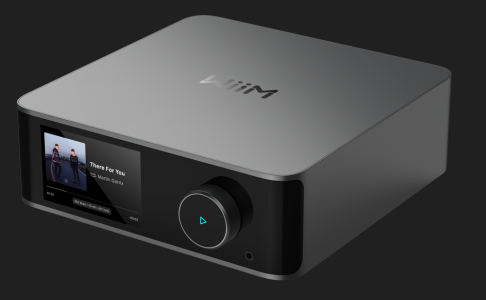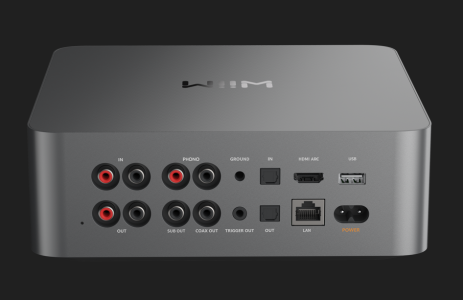Updated on 5/25/2024
Check out this fuller thread about our official announcement of the WiiM Ultra - https://forum.wiimhome.com/threads/meet-wiim-ultra-the-digital-hub-for-your-music.3487/
Updated on 4/19/2024
Hi Team,
We're excited to give you a sneak peek at the WiiM Ultra, your future go-to digital hub for all things music! We're putting the final touches on this innovative product and are on track for a Q2 release. Stay tuned for more updates as we gear up for launch!


Original message by Brantome:
As mentioned in a user reply from the WiiM/Linkplay CEO on the WiiM Fan Page on Facebook, WiiM are developing a new device called the WiiM Ultra which will have a screen, aluminium case and USB audio output. It should be available Q2 2024, so a good five to six months away.
Guess @Smartplug is due a prize (e.g. I'll lay off gently ribbing them about their constant 'when' questions) as I think they first suggested that name a while ago

That's the entirety of the information I have, but WiiM do say they'll release more details in due course.
Check out this fuller thread about our official announcement of the WiiM Ultra - https://forum.wiimhome.com/threads/meet-wiim-ultra-the-digital-hub-for-your-music.3487/
Updated on 4/19/2024
Hi Team,
We're excited to give you a sneak peek at the WiiM Ultra, your future go-to digital hub for all things music! We're putting the final touches on this innovative product and are on track for a Q2 release. Stay tuned for more updates as we gear up for launch!


Original message by Brantome:
As mentioned in a user reply from the WiiM/Linkplay CEO on the WiiM Fan Page on Facebook, WiiM are developing a new device called the WiiM Ultra which will have a screen, aluminium case and USB audio output. It should be available Q2 2024, so a good five to six months away.
Guess @Smartplug is due a prize (e.g. I'll lay off gently ribbing them about their constant 'when' questions) as I think they first suggested that name a while ago
That's the entirety of the information I have, but WiiM do say they'll release more details in due course.
Last edited by a moderator:
